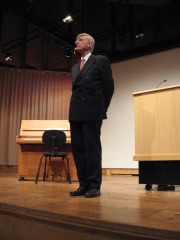
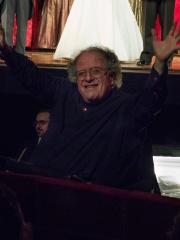
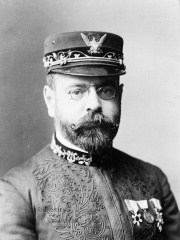
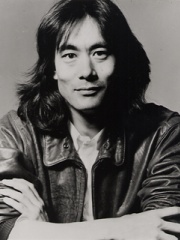
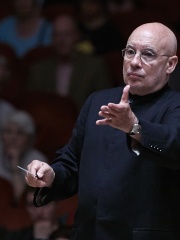
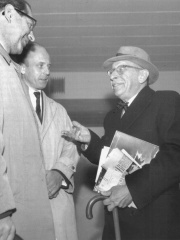
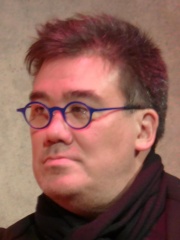
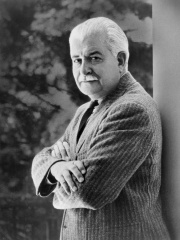
The Most Famous
CONDUCTORS from United States
This page contains a list of the greatest American Conductors. The pantheon dataset contains 128 Conductors, 10 of which were born in United States. This makes United States the birth place of the 5th most number of Conductors behind Russia, and Italy.
Top 10
The following people are considered by Pantheon to be the top 10 most legendary American Conductors of all time. This list of famous American Conductors is sorted by HPI (Historical Popularity Index), a metric that aggregates information on a biography's online popularity. Visit the rankings page to view the entire list of American Conductors.

1. Herbert Blomstedt (b. 1927)
With an HPI of 67.09, Herbert Blomstedt is the most famous American Conductor. His biography has been translated into 22 different languages on wikipedia.
Herbert Thorson Blomstedt (Swedish: [ˈhæ̌rːbɛʈ ˈblʊ̌mːstɛt]; born 11 July 1927) is an American-born Swedish conductor of classical music. At the age of 98, he continues to conduct concerts in Europe and the United States.

2. James Levine (1943 - 2021)
With an HPI of 63.55, James Levine is the 2nd most famous American Conductor. His biography has been translated into 33 different languages.
James Lawrence Levine ( liv-EYEN; June 23, 1943 – March 9, 2021) was an American conductor and pianist. He was music director of the Metropolitan Opera from 1976 to 2016, and wielded the baton for 2577 Met performances. At the end of his career, his reputation was tarnished by allegations of sexual misconduct. Levine denied the claims, but the Met found them credible enough to fire him in 2018. Levine held leadership positions with the Ravinia Festival, the Munich Philharmonic, and the Boston Symphony Orchestra. In 1980 he started the Lindemann Young Artists Development Program, and trained singers, conductors, and musicians for professional careers. After taking an almost two-year health-related hiatus from conducting from 2011 to 2013, during which time he held artistic and administrative planning sessions at the Met, and led training of the Lindemann Young Artists, Levine retired as the Met's full-time Music Director following the 2015–16 season to become Music Director Emeritus.

3. John Philip Sousa (1854 - 1932)
With an HPI of 63.38, John Philip Sousa is the 3rd most famous American Conductor. His biography has been translated into 42 different languages.
John Philip Sousa ( SOO-zə, SOO-sə, Portuguese: [ˈso(w)zɐ]; November 6, 1854 – March 6, 1932) was an American composer and conductor of the late Romantic era known primarily for U.S. military marches. He is known as "The March King" or the "American March King", to distinguish him from his British counterpart Kenneth J. Alford. Among Sousa's best-known marches are "The Stars and Stripes Forever" (National March of the United States of America), "Semper Fidelis" (official march of the United States Marine Corps), "The Liberty Bell", "The Thunderer", and "The Washington Post". Sousa began his career playing violin and studying music theory and composition under John Esputa and George Felix Benkert. In 1868, Sousa's father enlisted him in the United States Marine Band as an apprentice. Sousa left the band in 1875, and over the next five years, he performed as a violinist and learned to conduct. In 1880, Sousa rejoined the Marine Band and served there for 12 years as director. In 1892, he left the Marine Band and organized the civilian Sousa Band. From 1880 until his death, Sousa focused exclusively on conducting and writing music. He aided in the development of the sousaphone, a large brass instrument similar to the helicon and tuba. Upon the United States joining World War I, Sousa was awarded a wartime commission of lieutenant to lead the Naval Reserve Band in Illinois. He then returned to conduct the Sousa Band until his death in 1932. In the 1920s, Sousa was promoted to the permanent rank of lieutenant commander in the naval reserve.

4. Kent Nagano (b. 1951)
With an HPI of 59.51, Kent Nagano is the 4th most famous American Conductor. His biography has been translated into 16 different languages.
Kent George Nagano (born November 22, 1951) is an American conductor and opera administrator. From 2015 until 2025, he was Generalmusikdirektor (GMD) of the Hamburg State Opera and the Philharmonisches Staatsorchester Hamburg.
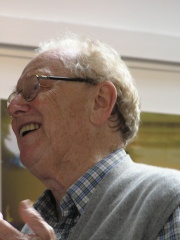
5. Charles Mackerras (1925 - 2010)
With an HPI of 58.92, Charles Mackerras is the 5th most famous American Conductor. His biography has been translated into 23 different languages.
Sir Alan Charles MacLaurin Mackerras (; (17 November 1925 – 14 July 2010) was an American-born Australian conductor. He was an authority on the operas of Janáček and Mozart, and the comic operas of Gilbert and Sullivan. He was long associated with the English National Opera (and its predecessor) and Welsh National Opera and was the first Australian chief conductor of the Sydney Symphony Orchestra. He also specialized in Czech music as a whole, producing many recordings for the Czech label Supraphon.

6. Dennis Russell Davies (b. 1944)
With an HPI of 56.19, Dennis Russell Davies is the 6th most famous American Conductor. His biography has been translated into 16 different languages.
Dennis Russell Davies (born April 16, 1944, in Toledo, Ohio) is an American conductor and pianist. He is chief conductor of the Brno Philharmonic and of the MDR Leipzig Radio Symphony Orchestra.

7. Robert Craft (1923 - 2015)
With an HPI of 52.12, Robert Craft is the 7th most famous American Conductor. His biography has been translated into 15 different languages.
Robert Lawson Craft (October 20, 1923 – November 10, 2015) was an American conductor and writer. He is best known for his intimate professional relationship with Igor Stravinsky, on which Craft drew in producing numerous recordings and books.

8. Alan Gilbert (b. 1967)
With an HPI of 51.18, Alan Gilbert is the 8th most famous American Conductor. His biography has been translated into 17 different languages.
Alan Gilbert (born February 23, 1967) is an American conductor and violinist. He is principal conductor of the NDR Elbphilharmonie Orchestra and music director of the Royal Swedish Opera. He was music director of the New York Philharmonic from 2009 to 2017.

9. Arthur Fiedler (1894 - 1979)
With an HPI of 51.00, Arthur Fiedler is the 9th most famous American Conductor. His biography has been translated into 17 different languages.
Arthur Fiedler (December 17, 1894 – July 10, 1979) was an American conductor known for his association with both the Boston Symphony and Boston Pops orchestras. With a combination of musicianship and showmanship, he made the Boston Pops one of the best-known orchestras in the United States. Fiedler was sometimes criticized for over-popularizing music, particularly when adapting popular songs or editing portions of the classical repertoire, but he kept performances informal and sometimes self-mocking to attract a bigger audience.
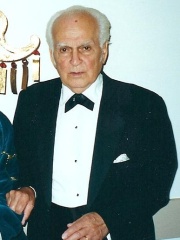
10. Anton Coppola (1917 - 2020)
With an HPI of 48.02, Anton Coppola is the 10th most famous American Conductor. His biography has been translated into 15 different languages.
Antonio Francesco Coppola (March 21, 1917 – March 9, 2020) was an American opera conductor and composer. He was the uncle of film director Francis Ford Coppola, academic August Coppola, and actress Talia Shire, as well as the great-uncle of Nicolas Cage, Christopher Coppola, Sofia Coppola, Gian-Carlo Coppola, Jason Schwartzman and Robert Schwartzman, and the younger brother of American composer and musician Carmine Coppola.
People
Pantheon has 10 people classified as American conductors born between 1854 and 1967. Of these 10, 4 (40.00%) of them are still alive today. The most famous living American conductors include Herbert Blomstedt, Kent Nagano, and Dennis Russell Davies. The most famous deceased American conductors include James Levine, John Philip Sousa, and Charles Mackerras.
Living American Conductors
Go to all RankingsHerbert Blomstedt
1927 - Present
HPI: 67.09
Kent Nagano
1951 - Present
HPI: 59.51
Dennis Russell Davies
1944 - Present
HPI: 56.19
Alan Gilbert
1967 - Present
HPI: 51.18
Deceased American Conductors
Go to all RankingsJames Levine
1943 - 2021
HPI: 63.55
John Philip Sousa
1854 - 1932
HPI: 63.38
Charles Mackerras
1925 - 2010
HPI: 58.92
Robert Craft
1923 - 2015
HPI: 52.12
Arthur Fiedler
1894 - 1979
HPI: 51.00
Anton Coppola
1917 - 2020
HPI: 48.02
Overlapping Lives
Which Conductors were alive at the same time? This visualization shows the lifespans of the 6 most globally memorable Conductors since 1700.

